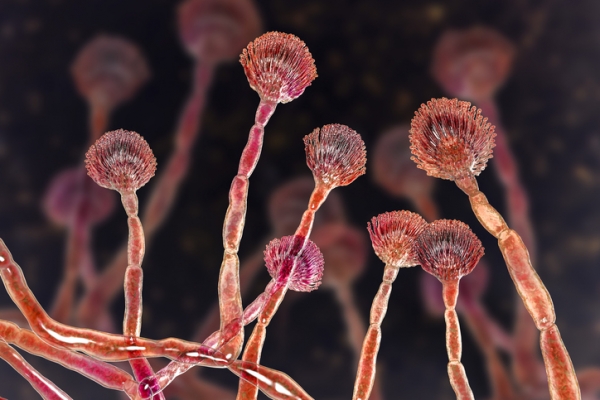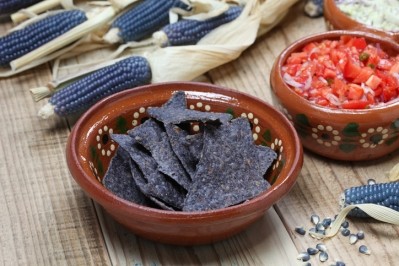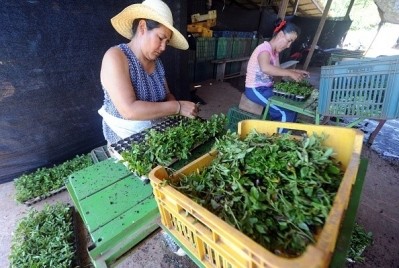Tortillas linked to aflatoxin exposure in Guatemala

Aflatoxins are secondary metabolites produced by molds that grow on food crops, such as corn and peanuts, in hot, humid countries.
They can appear in the field, during harvest or during storage and in Guatemala, where over half of the population are small-scale farmers and most people eat corn on a daily basis, aflatoxins are a major food safety issue.
The central American country has the highest incidence of liver cancer and stunting in the western hemisphere, both of which are associated with aflatoxin B1 (AFB1).
AFB1 is the most toxicologically potent aflatoxin and is classified as a group one human carcinogen by the International Agency for Research on Cancer (IARC).
'Major implications for public health'
Despite this prevalence, a recently published study claims to be the first to examine the link between corn intake and the level of serum AFB1-albumin adducts – a marker of AFB1 – in Guatemalan adults.
Led by María F. Kroker-Lobos from Guatemala City's Institute of Nutrition of Central America and Panama (INCAP), the team of scientists carried out a cross-sectional study among 461 Guatemalan adults living in five different areas of the country (both urban and rural), estimating corn intake and taking serum samples to determine AFB1-albumin adduct levels.
The association between tortilla consumption and AFB1-albumin levels was “statistically significant”.
“These findings indicate that tortilla may be an important source of AFB1 exposure in the Guatemalan population. Therefore, efforts to control or mitigate AFB1 levels in contaminated maize used for tortillas may reduce overall exposure in this population.”
“Our results have major implications for public health given the strong relationship between AFB1, and health outcomes such as immunosuppression, growth retardation and liver cancer," they wrote.
“Effective public health interventions [...] are urgently needed."
Nixtamalization may reduce aflatoxins
There are a number of steps that could effectively reduce aflatoxin exposure. These include improving pre- and post-harvest agricultural practices and plant disease management, ensuring adequate storage conditions and promoting adequate nixtamalization.
Nixtamalization is a Meso-American alkaline-cooking process which involves boiling maize meal with lime and then rinsing it out. When done correctly, it may reduce exposure to aflatoxins and could be an area for future research, said Kroker-Lobos.
"Guatemala has a traditional corn-based diet and maize is important for our culture, especially for those with Mayan ancestry," she told FoodNavigator-LATAM. "More research is needed to understand the role of nixtamalization and also to explore innovative programs to deliver education and key messages to the most vulnerable populations within health and education programs."
"Unfortunately, there is not sufficient expenditure to address this problem," she added. "[However], there are experiences in Asia where education programs targeting the most vulnerable populations improved storage conditions and lowered AFB1 levels in the population.
"Improving storage conditions is one of the most feasible interventions [that] will require a coordinated intersectoral effort from the government's education, health, and agriculture ministries."
Ultra-processed products
As part of the study, the scientists also classified the tortilla intake according to its level of processing using the NOVA classification.
Boiled or grilled corn cobs were considered unprocessed, for instance, while corn-based products that have been baked, extruded, molded and re-shaped were considered ultra-processed.
Although the consumption of products such as snacks and breakfast cereals is very low in Guatemala, the researchers found no association between AFB1 exposure and an increased consumption of processed and ultra-processed maize foods.
This may be because manufacturers' processing steps, such as sorting, milling, steeping, and extrusion, lower mycotoxin levels or because the maize selected for processing is less likely to be contaminated with AFB1, they suggested.
However, an increased intake of such products would have "tremendously negative consequences" for Guatemalans' health, Kroker-Lobos said.
"There is abundant evidence of the risk and health consequences between the consumption of processed and ultra-processed foods and health outcomes such as obesity, diabetes, and cardiovascular diseases. Ultra-processed foods are high in sugars, sodium, calories, fats and it has been directly associated with obesity trends and prevalence worldwide. We do not recommend the consumption of ultra-processed foods to reduce AFB1 exposure."
Source: Toxicology Reports
“Association between aflatoxin-albumin adduct levels and tortilla consumption in Guatemalan adults”
Available online ahead of print, 22 May 2019, doi.org/10.1016/j.toxrep.2019.05.009
Authors: María F. Kroker-Lobos, Christian S.Alvarez, Alvaro Rivera-Andrade et al.












